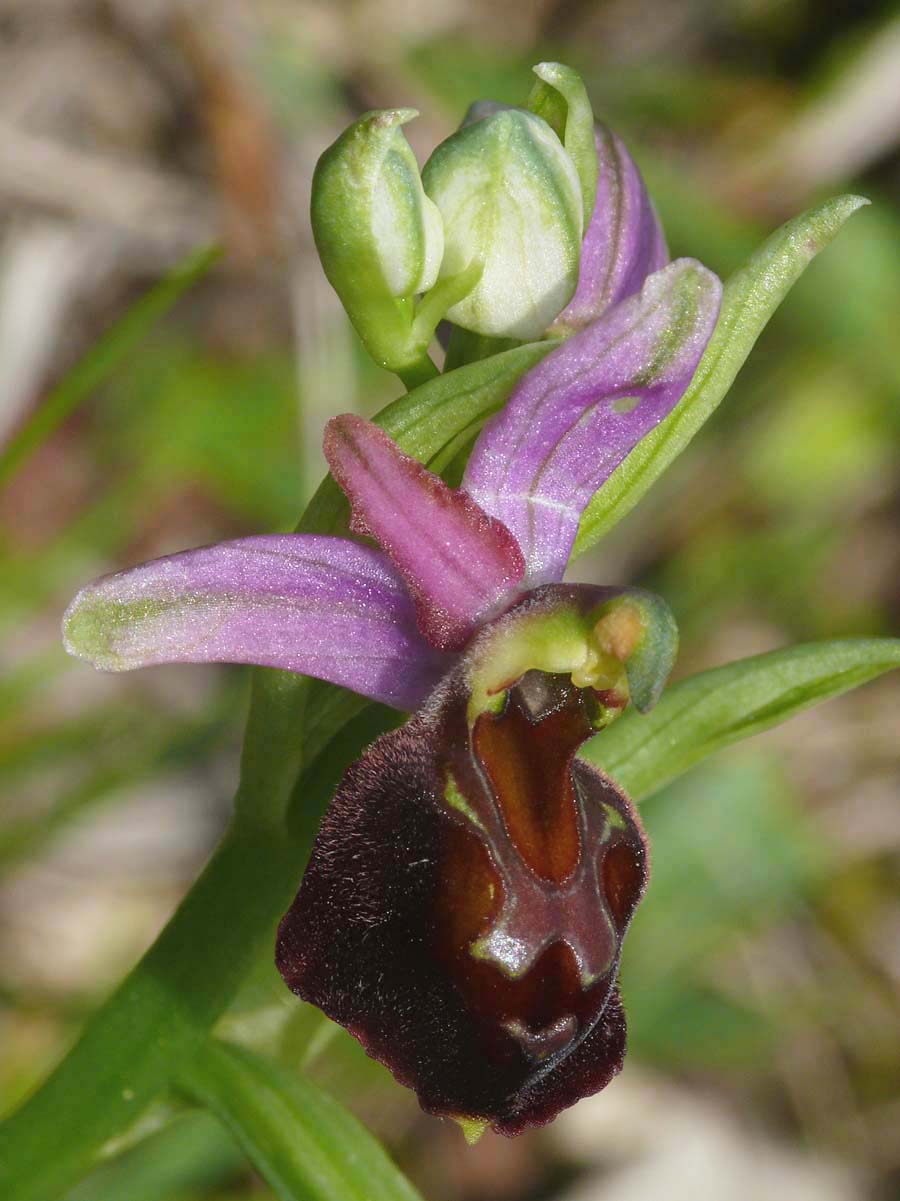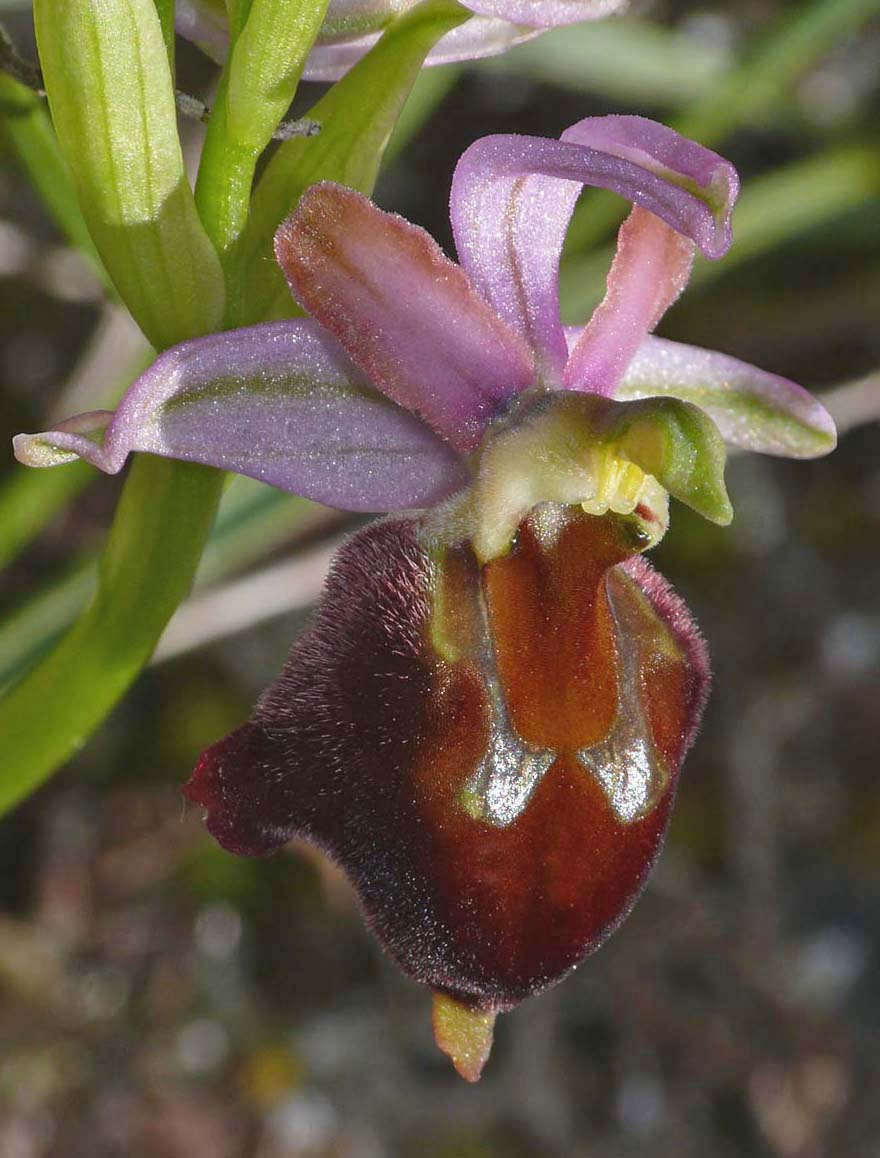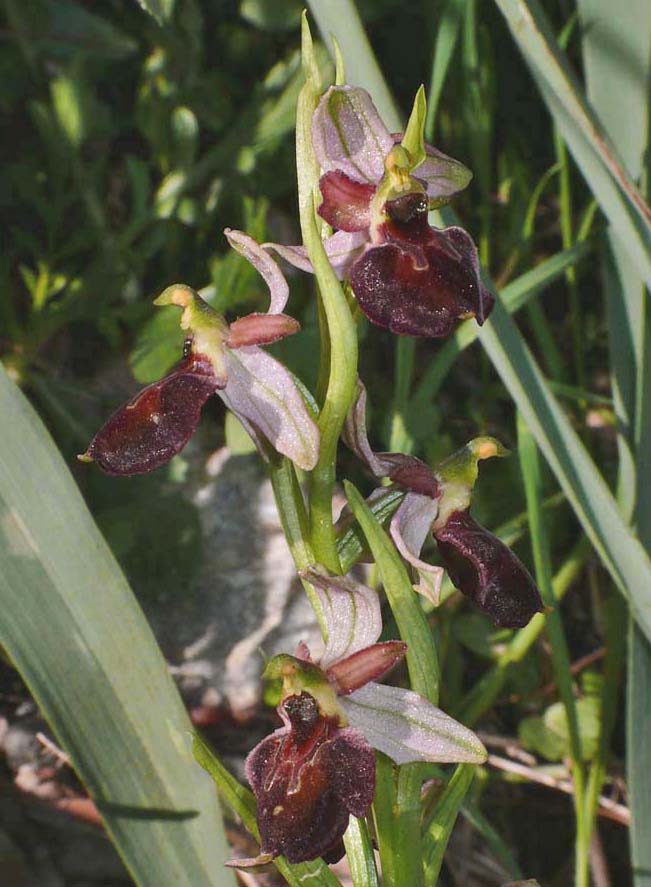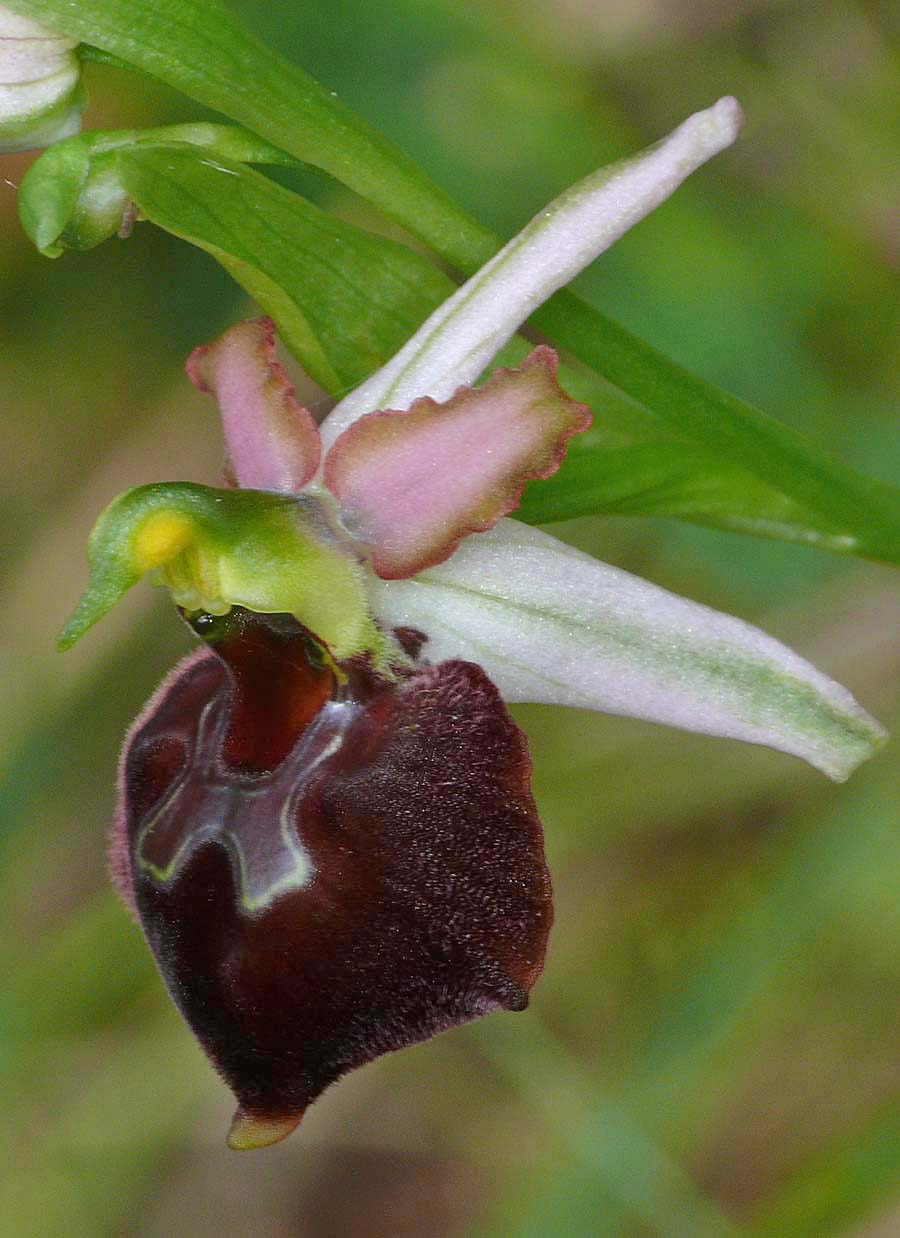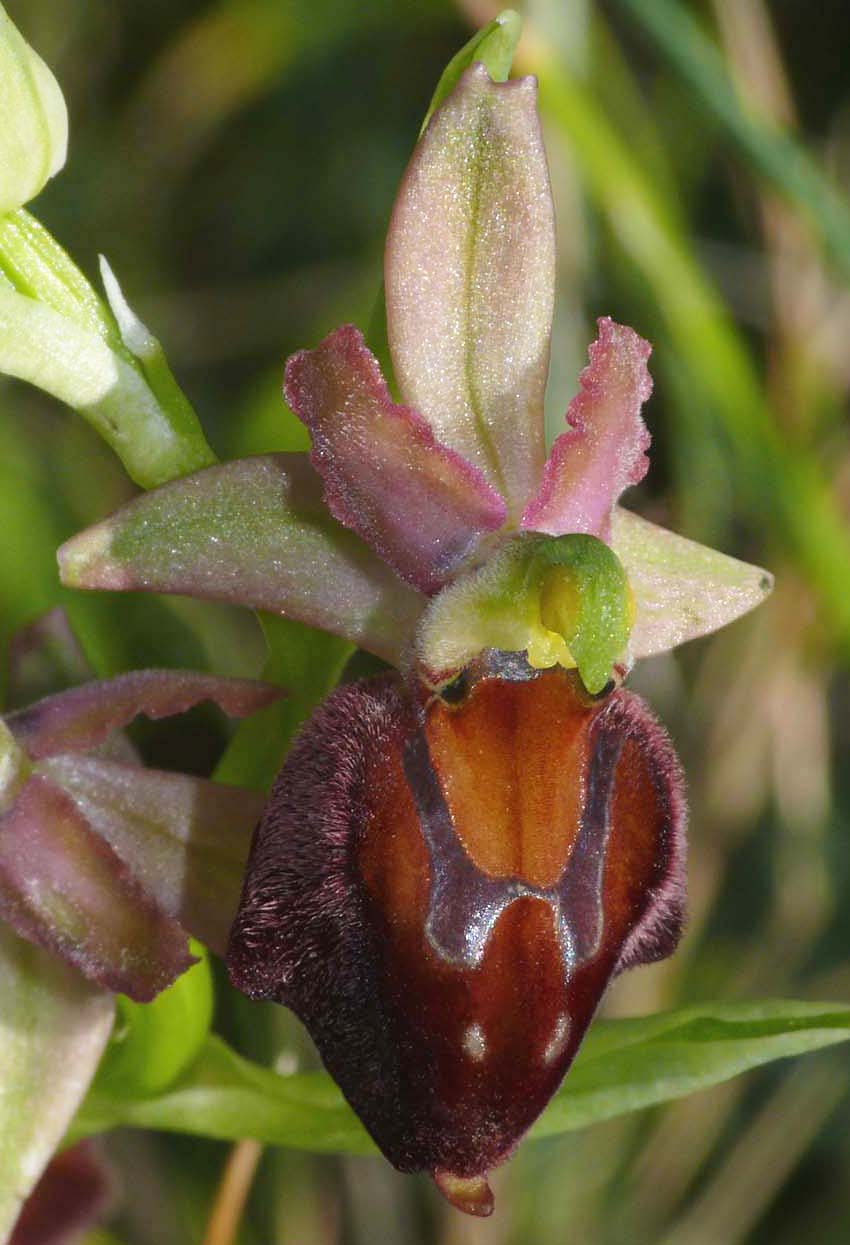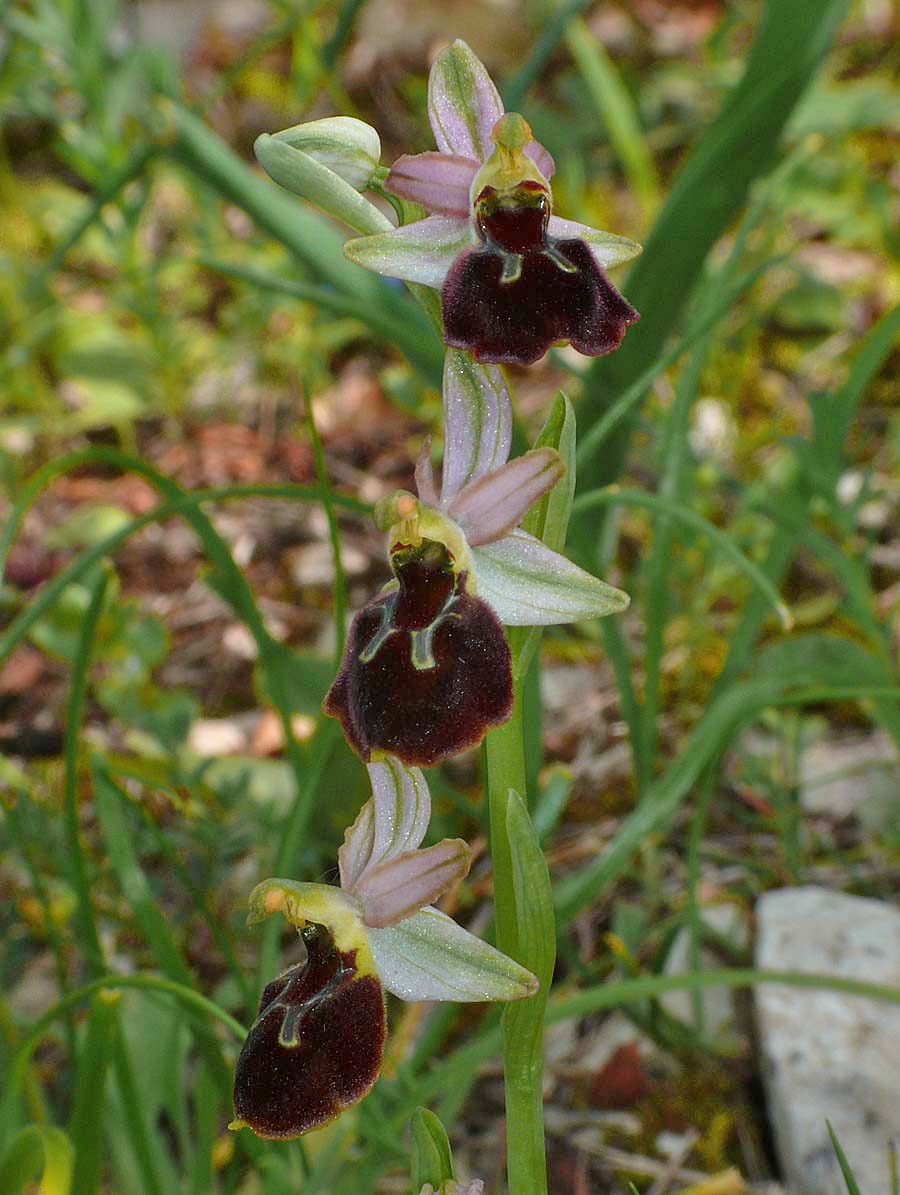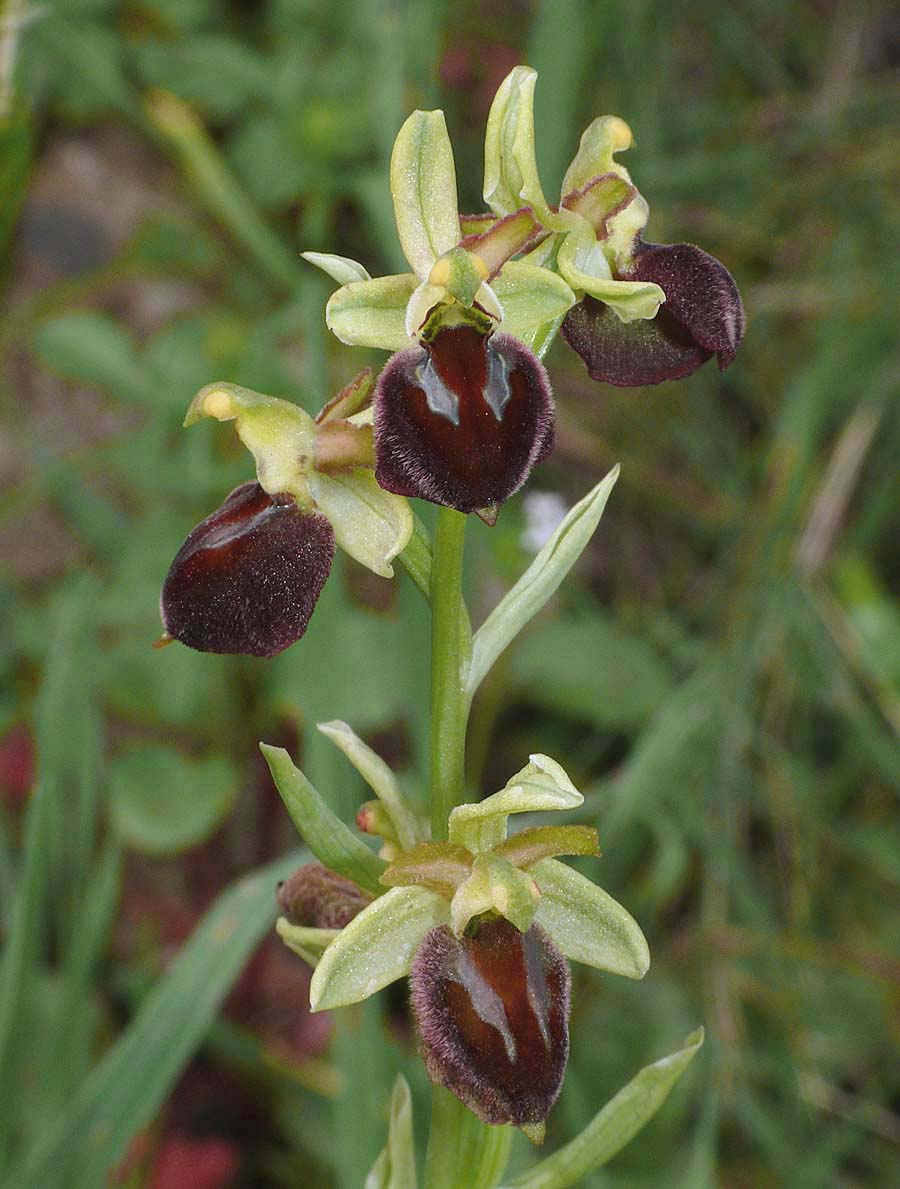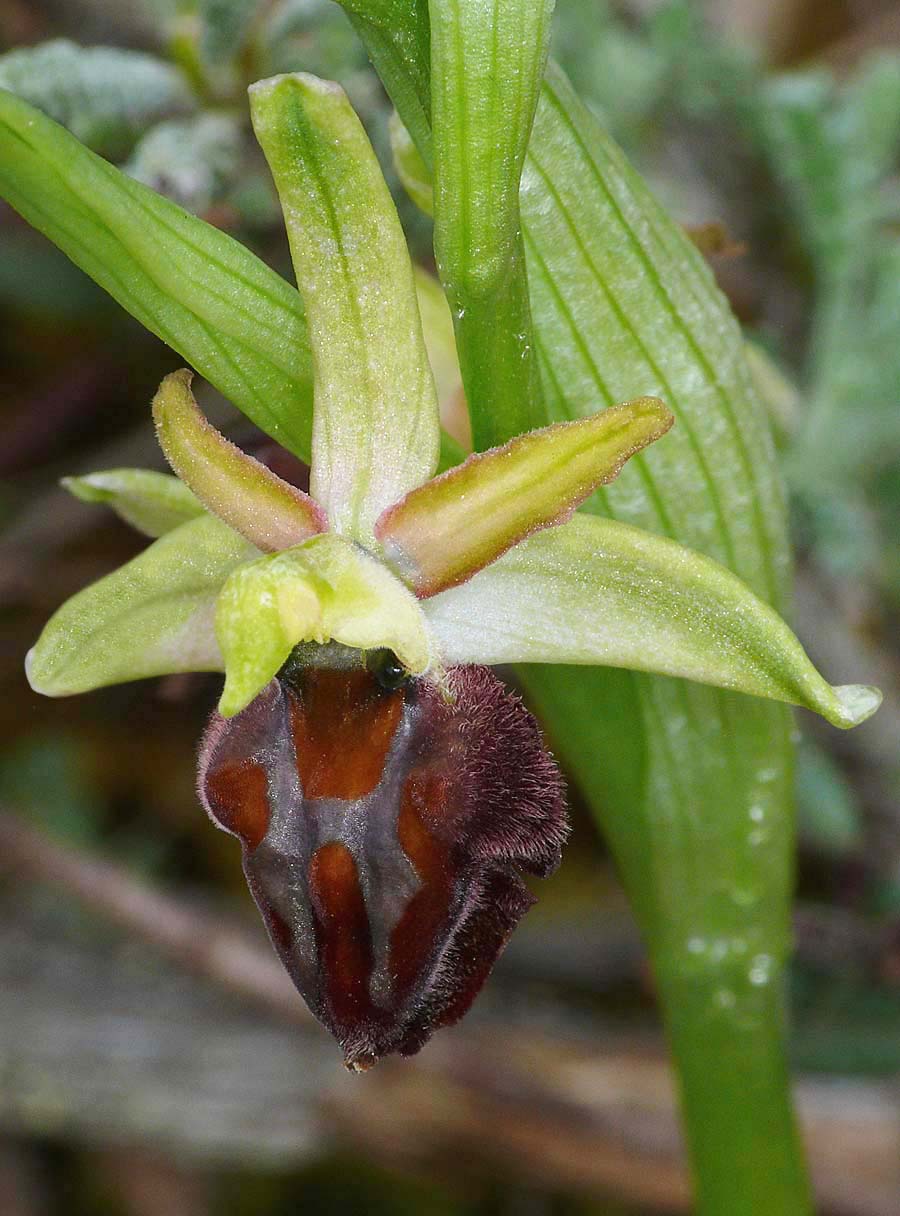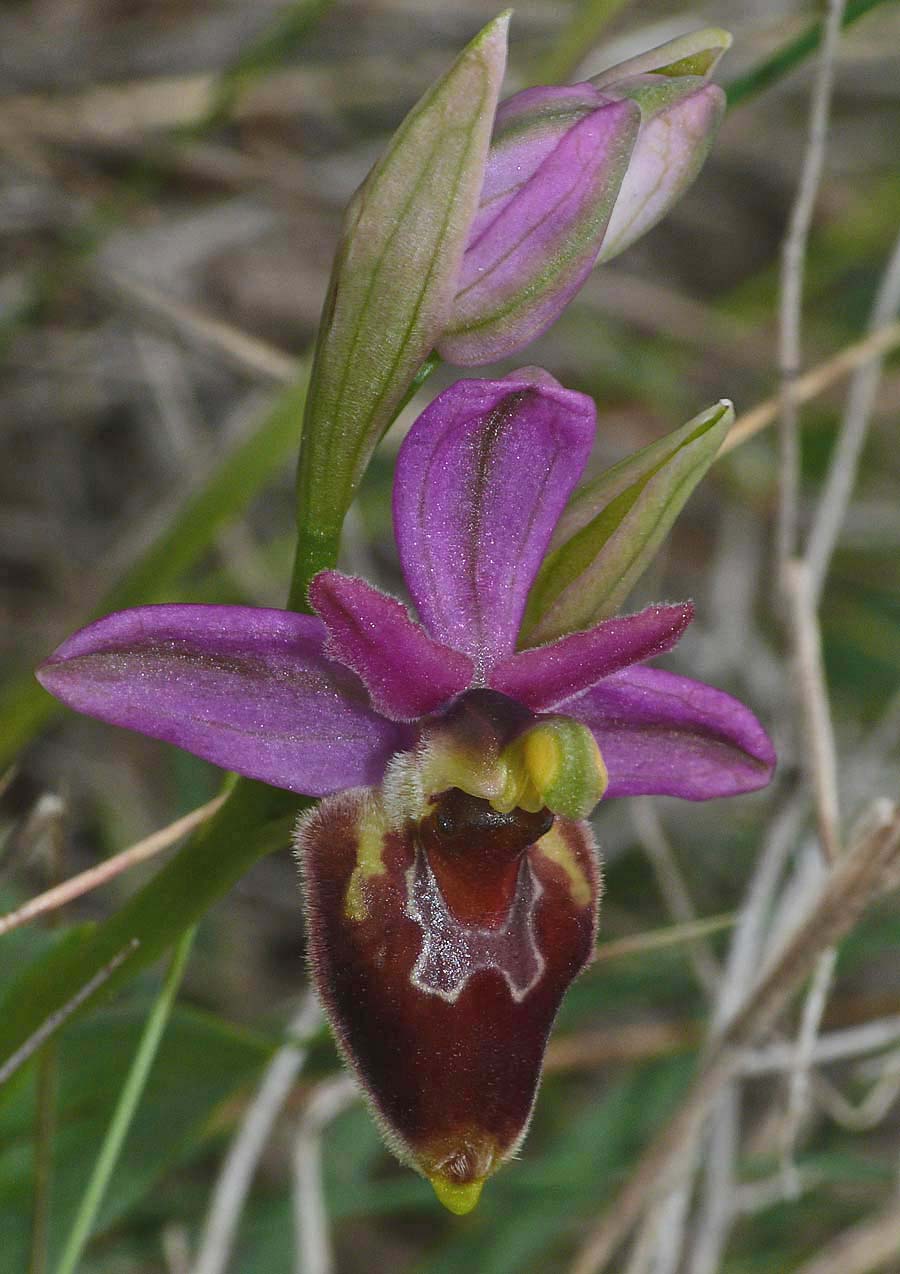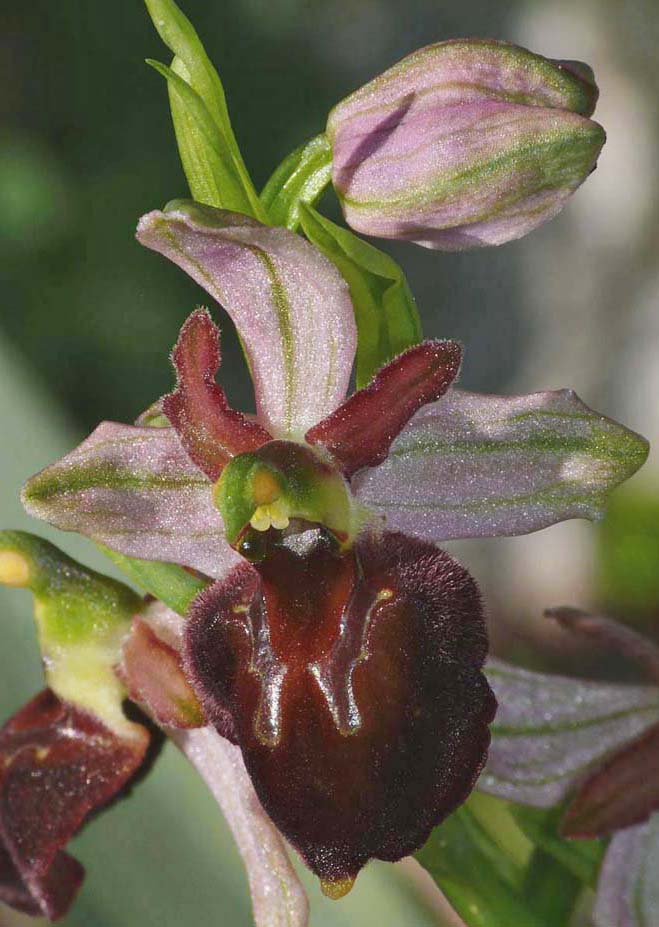O. morisii
was first described from Sardinia by Martelli in 1896 and belongs to the
widespread O. argolica group
of Ophrys. It is named in honour of G. G. Moris an eminent 19th century, Italian botanist.
This species is endemic to Sardinia and Corsica where although often local, is not at all uncommon and can be found in most soil conditions bar those of a strongly acidic nature. As can be seen from the pictures, it is hugely variable to the point that a concise description is virtually impossible. The range of O. morisii often brings it into contact with a fellow endemic, O. praecox and the two share a number of similarities which can often cause difficulty with identification.
These similarities are attributable in no small part to the hybrid origins of O. morisii , where the generally accepted belief is that it was heavily introgressed by a now completely absorbed member of the O. exaltata group, similar to O. praecox. It is unsurprising therefore that some plants of O. morisii can be difficult to distinguish from O. praecox, particularly in forms exhibiting white sepals and simple specular marking. O. praecox is however an earlier flowerer and will be in a poor condition when O. morisii is starting to appear in early April.
Typically O. morisii has a dark brown to rusty red lip with a slightly lighter coloured basal field sitting above a speculum loosely based on an H pattern but which can vary from complex to greatly reduced. Sepals can be of any shade, usually green veined but petals will generally be more richly coloured. It flowers during April and May in full sun or mid shade and appears quite comfortable growing at altitudes up to approx 1500 metres.
This species is endemic to Sardinia and Corsica where although often local, is not at all uncommon and can be found in most soil conditions bar those of a strongly acidic nature. As can be seen from the pictures, it is hugely variable to the point that a concise description is virtually impossible. The range of O. morisii often brings it into contact with a fellow endemic, O. praecox and the two share a number of similarities which can often cause difficulty with identification.
These similarities are attributable in no small part to the hybrid origins of O. morisii , where the generally accepted belief is that it was heavily introgressed by a now completely absorbed member of the O. exaltata group, similar to O. praecox. It is unsurprising therefore that some plants of O. morisii can be difficult to distinguish from O. praecox, particularly in forms exhibiting white sepals and simple specular marking. O. praecox is however an earlier flowerer and will be in a poor condition when O. morisii is starting to appear in early April.
Typically O. morisii has a dark brown to rusty red lip with a slightly lighter coloured basal field sitting above a speculum loosely based on an H pattern but which can vary from complex to greatly reduced. Sepals can be of any shade, usually green veined but petals will generally be more richly coloured. It flowers during April and May in full sun or mid shade and appears quite comfortable growing at altitudes up to approx 1500 metres.
